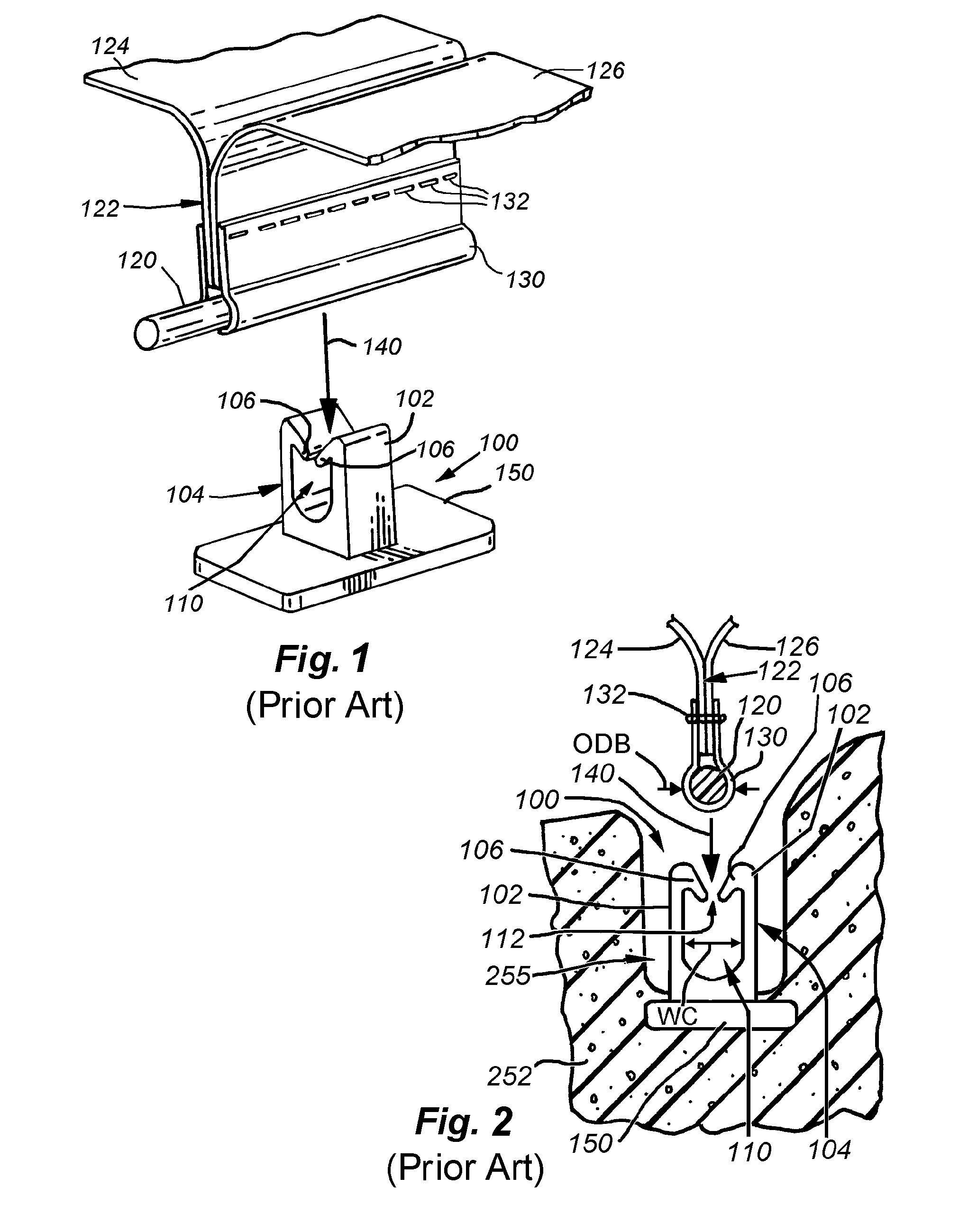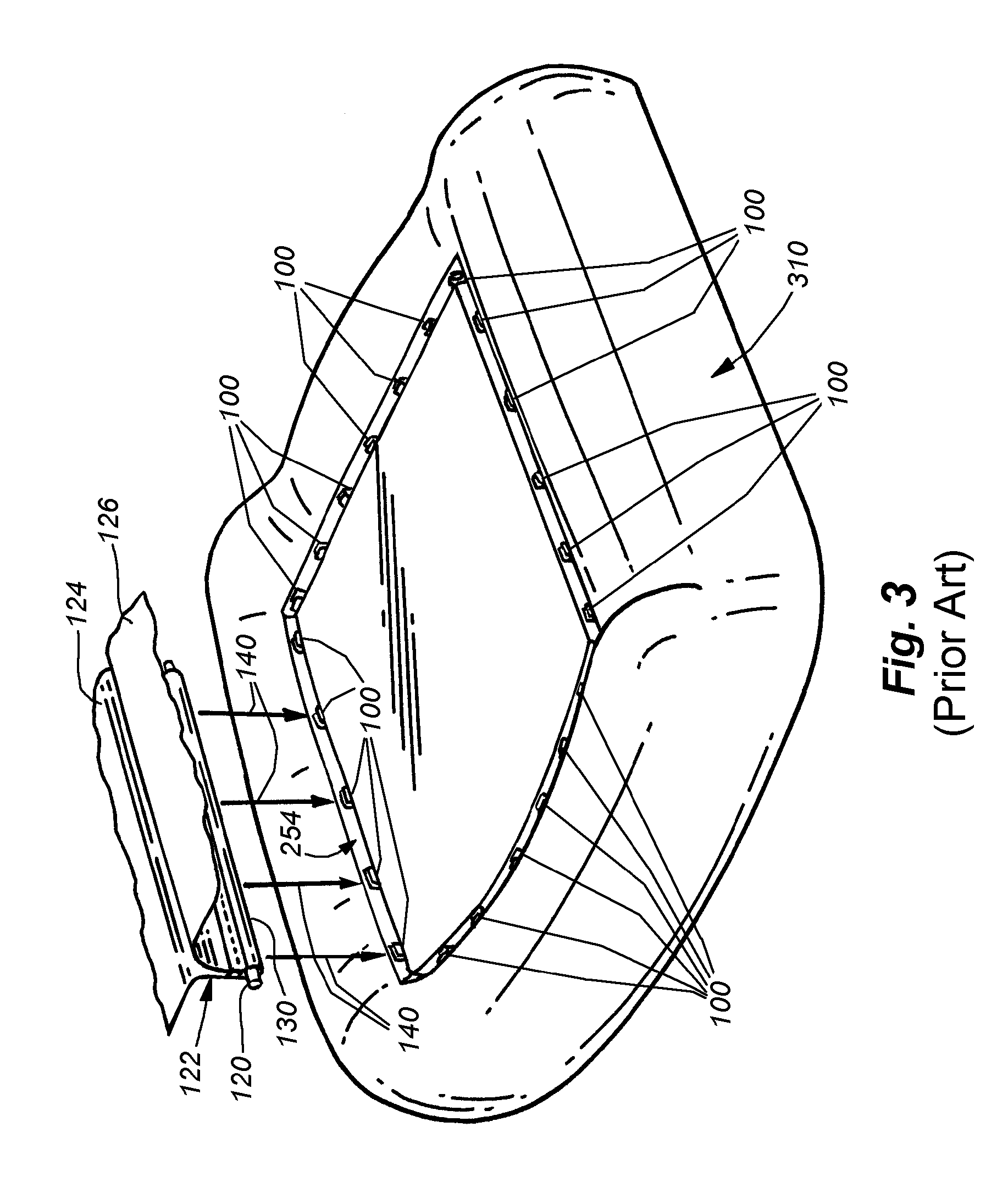Low-profile upholstery clip for attaching a bead to a foam substrate
a foam substrate and low-profile technology, applied in the field of low-profile upholstery clips, can solve the problems of difficult repair of permanent joints, difficult to create permanent joints, and fabric will tend to billow or “tents”, and achieve the effects of high resistance, high resistance, and easy bead installation
- Summary
- Abstract
- Description
- Claims
- Application Information
AI Technical Summary
Benefits of technology
Problems solved by technology
Method used
Image
Examples
Embodiment Construction
I. Festooned Clip Arrangements
[0045]FIG. 4 shows a festooned grouping 400 of dual-ganged clips 410 according to an embodiment of this invention. This and other embodiments described with reference to FIGS. 1-18 embodiment detail a “higher-profile” clip, which can be readily substituted with the novel low-profile clip design described further below. With reference further to FIGS. 5 and 6, the clips 410 comprise a pair of opposed clip members 412 (also sometimes referred to herein as “clips”), joined by a central shaft segment 414. Each discrete clip 410 in the festooned grouping is a unitary structure, with the clip members 412 and adjoining intermediate segment 414 being molded together as a single unit. As will be described below alternate forming techniques, such as extrusion are also contemplated.
[0046]The clips 410 of this invention can be constructed from a variety of materials, which will also be described in further detail below. In general, the material should be durable, c...
PUM
 Login to View More
Login to View More Abstract
Description
Claims
Application Information
 Login to View More
Login to View More - R&D
- Intellectual Property
- Life Sciences
- Materials
- Tech Scout
- Unparalleled Data Quality
- Higher Quality Content
- 60% Fewer Hallucinations
Browse by: Latest US Patents, China's latest patents, Technical Efficacy Thesaurus, Application Domain, Technology Topic, Popular Technical Reports.
© 2025 PatSnap. All rights reserved.Legal|Privacy policy|Modern Slavery Act Transparency Statement|Sitemap|About US| Contact US: help@patsnap.com



